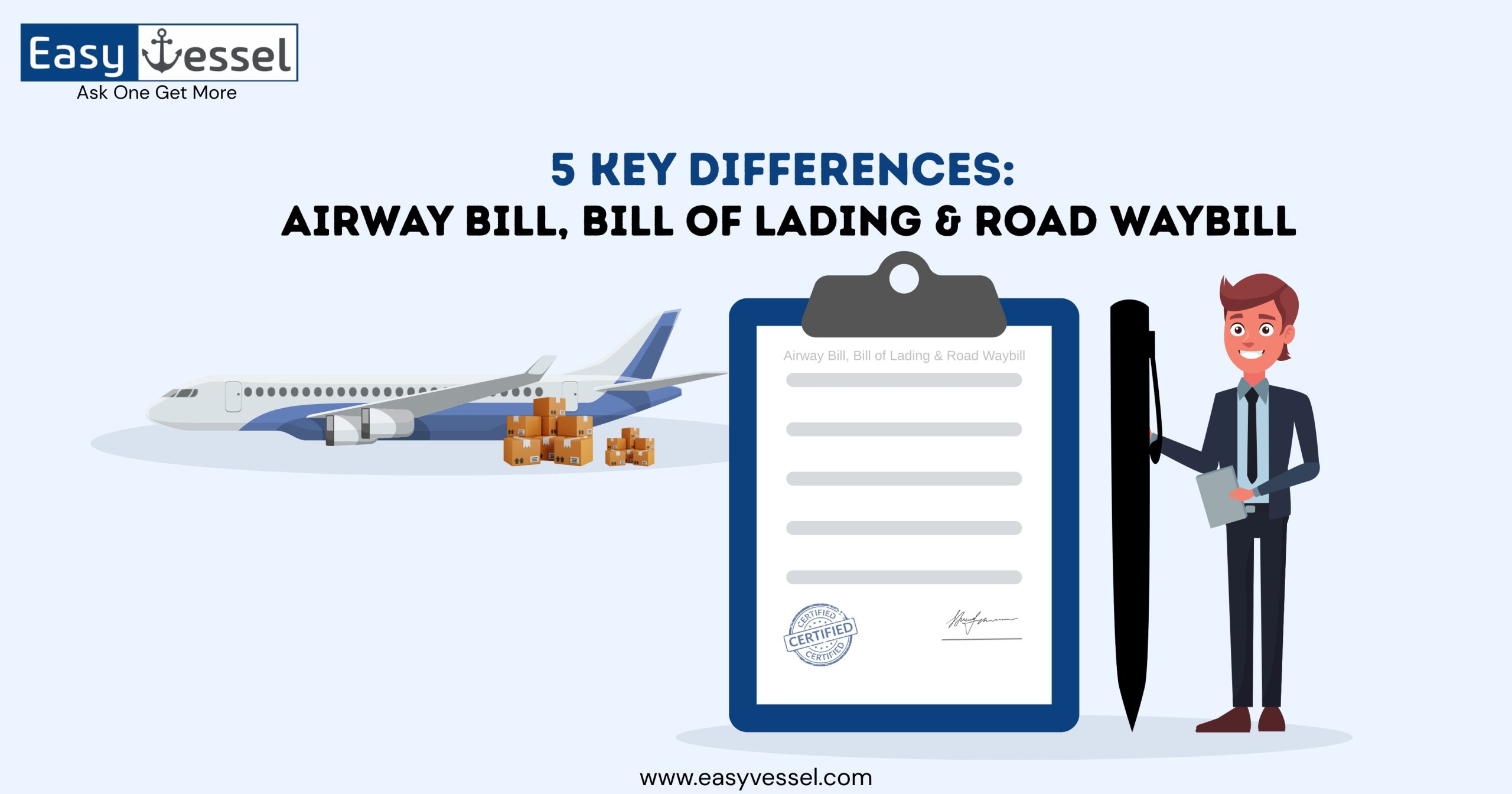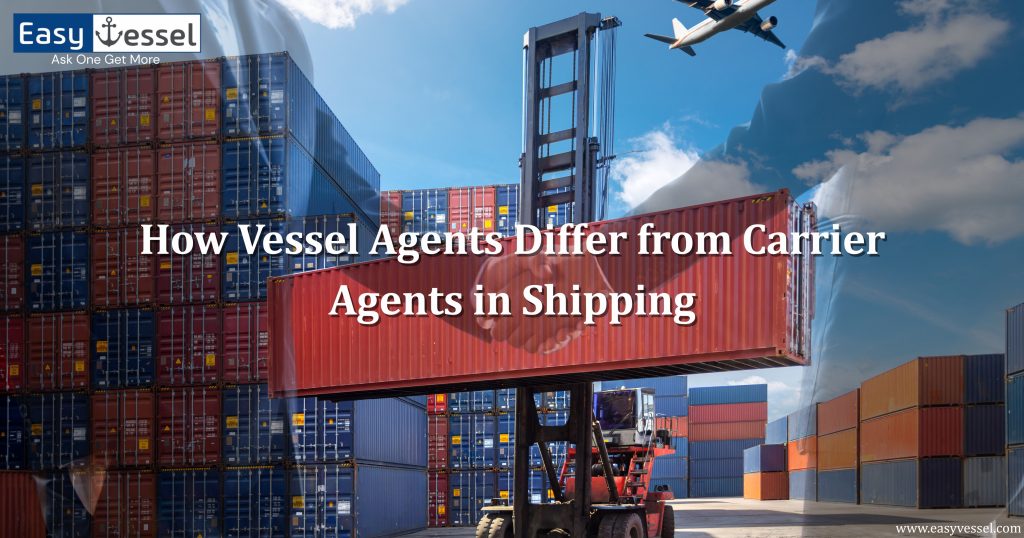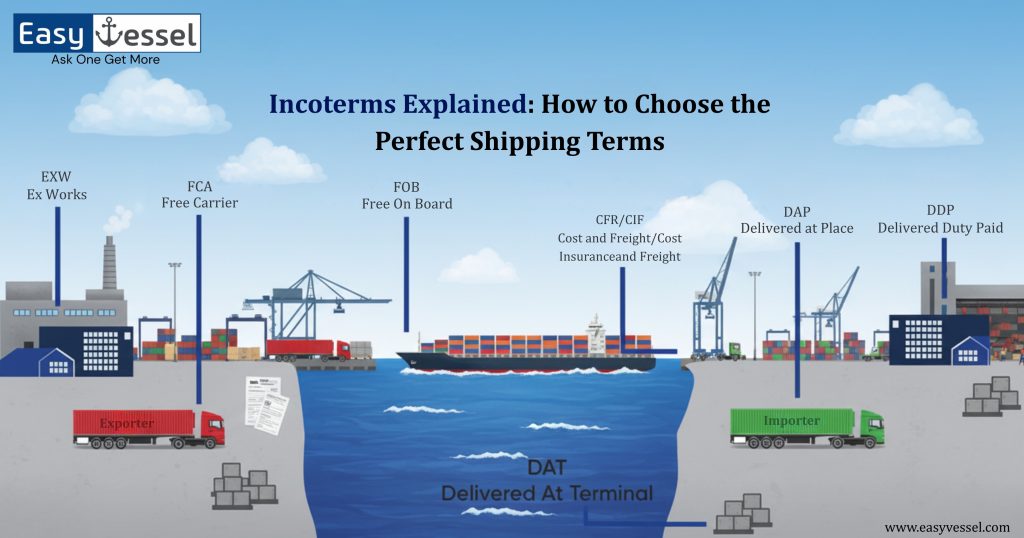Introduction
Shipping documents play a crucial role in global trade, ensuring the safe, efficient, and legal transportation of goods across various modes of transport. Among the most essential shipping documents are the Airway Bill (AWB), Bill of Lading (BOL), and Road Waybill.
These documents act as contracts of carriage, receipts of goods, and proof of ownership, making them indispensable in international logistics. While they serve similar purposes, each document has unique characteristics tailored to specific transport modes—air, sea, and road.
The Airway Bill is used for air cargo, the Bill of Lading is primarily for ocean freight, and the Road Waybill is designed for land transportation. Their legal standing, negotiability, and role in transferring ownership also vary significantly. Businesses engaged in freight forwarding and global supply chains must have a clear understanding of these differences to prevent delays, disputes, and compliance issues. Choosing the correct document based on the shipping method and destination is crucial for smooth operations.
What is an Airway Bill (AWB)?
An Airway Bill (AWB) is a non-negotiable shipping document used for air freight issued by an airline or freight forwarder. It serves as proof of receipt of goods and acts as a contract of carriage between the shipper and the carrier. The AWB contains crucial details such as the consignee’s information, shipment description, weight, dimensions, and delivery instructions.
Unlike a Bill of Lading, an AWB does not serve as a document of title, meaning it cannot be used to transfer ownership of goods. It ensures that shipments are tracked throughout their journey and facilitates smooth customs clearance. The AWB also includes terms and conditions for liability and claims in case of loss or damage. Properly completing this document is essential for avoiding delays and ensuring a seamless shipping process.
Key Features of an Airway Bill:
- Issued by an airline or freight forwarder.
- It is non-negotiable, meaning it does not serve as a document of title.
- Specifies the route and terms of transport.
- Used for tracking shipments in air cargo logistics.
What is a Bill of Lading (BOL)?
A Bill of Lading (BOL) is a legal document issued by a carrier to the shipper detailing the type, quantity, and destination of goods being transported by sea. Unlike the AWB, a BOL can be negotiable, allowing for the transfer of ownership of the goods during transit.
Key Features of a Bill of Lading:
- It serves as a document of title, meaning ownership of goods can be transferred.
- Contains details about the shipment and transportation terms.
- Required for customs clearance in international trade.
- It can be either straight (non-negotiable) or order BOL (negotiable).
What is a Road Waybill?
A Road Waybill is a crucial transport document used for overland freight shipments, mainly by truck or rail. It contains essential shipment details, including the sender, recipient, cargo description, and transport conditions. This document serves as proof that the carrier has received the goods for delivery and outlines the terms of transportation.
Unlike a Bill of Lading, a Road Waybill is not a document of title, meaning ownership of the goods cannot be transferred through it. It is commonly used for domestic and international road transport to facilitate smooth logistics. The Road Waybill ensures accountability and proper tracking throughout the transportation process.
Key Features of a Road Waybill:
- Used for domestic and cross-border road transportation.
- Non-negotiable and serves as proof of contract between the shipper and carrier.
- Includes details such as consignee information, cargo type, and route.
- Required for tracking and regulatory compliance.
5 Key Differences Between AWB, BOL, and Road Waybill
1. Mode of Transport
- Airway Bill (AWB): This document is used explicitly for air cargo shipments, serving as a receipt of goods and a contract of carriage between the shipper and the airline. It ensures that shipments are transported efficiently through air freight services.
- Bill of Lading (BOL): This essential document is used for sea freight shipments, acting as a contract of carriage, a receipt of goods, and a document of title that can be transferred to different parties involved in the shipping process.
- Road Waybill: This document is primarily used for shipments transported overland via trucks or rail. It provides shipment details, serves as proof of receipt by the carrier, and ensures smooth coordination in domestic and international road freight operations.
Read More: Required Documents for Import Export: All You Need to Know
2. Negotiability & Transfer of Ownership
- Airway Bill (AWB): This document is strictly non-negotiable, meaning that ownership of the goods being transported cannot be transferred to another party during transit. It serves primarily as a receipt of goods and a contract of carriage between the shipper and the airline, ensuring that the cargo reaches its intended destination without changes in ownership.
- Bill of Lading (BOL): Unlike the AWB, a Bill of Lading can be either negotiable or non-negotiable. A negotiable Bill of Lading allows for the transfer of ownership from the shipper to different parties throughout the supply chain, making it a crucial document in international trade. This feature enables businesses to use it as collateral for financial transactions or to facilitate the sale of goods while they are still in transit.
- Road Waybill: This document, similar to the Airway Bill, is non-negotiable, meaning that ownership of the goods cannot be transferred while they are in transit. It serves as a transport document used for overland shipments via trucks or rail, providing important shipment details but without the function of a title document.
3. Legal Standing
- Airway Bill (AWB): Serves as a contract of carriage between the shipper and the airline, confirming the shipment details, but it does not act as a document of title, meaning ownership cannot be transferred during transit.
- Bill of Lading (BOL): Functions as a contract of carriage, a receipt of goods, and a document of title, allowing for the transfer of ownership while the shipment is in transit, making it essential in international trade.
- Road Waybill: Serves as a transport contract for goods moving by road or rail, providing shipment details and proof of receipt, but it does not function as a title document and cannot transfer ownership.
4. Customs and Documentation Use
- Airway Bill (AWB): A crucial document required for customs clearance in international air cargo shipments, providing shipment details and acting as proof of receipt by the carrier.
- Bill of Lading (BOL): A mandatory document for customs clearance in sea freight, confirming shipment details, ownership, and transportation terms between the shipper and consignee.
- Road Waybill: Primarily used for land transport by road or rail; while it includes shipment details, it may not always be required for customs clearance, depending on the country and regulations.
5. Issuing Authority
- Airway Bill (AWB): This document is officially issued by an airline or freight forwarder to confirm the receipt and transportation of air cargo.
- Bill of Lading (BOL): Provided by a shipping line or carrier, it serves as a contract, receipt of goods, and, in some cases, a negotiable title of ownership.
- Road Waybill: Typically issued by a trucking company or railway operator, it acts as proof of shipment and outlines transport details for overland freight.
Read More: What Is an LSP? Complete Guide on Types and Services
Importance of Choosing the Right Shipping Document
Selecting the correct shipping document is crucial for avoiding delays, ensuring legal compliance, and safeguarding cargo ownership rights. Each document—Airway Bill (AWB), Bill of Lading (BOL), and Road Waybill—serves a specific role in freight transportation and varies in terms of usage, negotiability, and customs requirements.
Misunderstanding their functions can lead to costly errors, shipment holds, or legal complications. An AWB is essential for air freight, ensuring smooth cargo movement through airlines, while a BOL is widely used for sea freight, offering ownership transfer capabilities.
On the other hand, a Road Waybill facilitates overland transportation via trucks or rail but does not serve as a negotiable instrument. Businesses involved in international trade must carefully assess their shipping needs and choose the appropriate document to ensure seamless logistics operations.
References
Frequently Asked Questions
An Airway Bill serves as a contract of carriage for air freight, providing shipment details and tracking information but not acting as a document of title.
No, a Bill of Lading is specifically for ocean freight. An Airway Bill is used for air shipments.
A BOL is primarily used for sea freight and serves as a negotiable document of title, meaning ownership of the goods can be transferred during transit. It also acts as a contract of carriage and a receipt of goods issued by the shipping line or carrier. In contrast, an AWB is used for air freight and is strictly non-negotiable, meaning it does not transfer ownership of the goods.
It depends on the regulations of the country, but generally, a Road Waybill is required for tracking and compliance in domestic and international road transport.
Missing or incorrect documents can cause shipping delays, customs issues, and financial losses, making it crucial to use the correct document for each transport mode.
No, an Airway Bill is non-negotiable and does not allow the transfer of ownership during transit.



